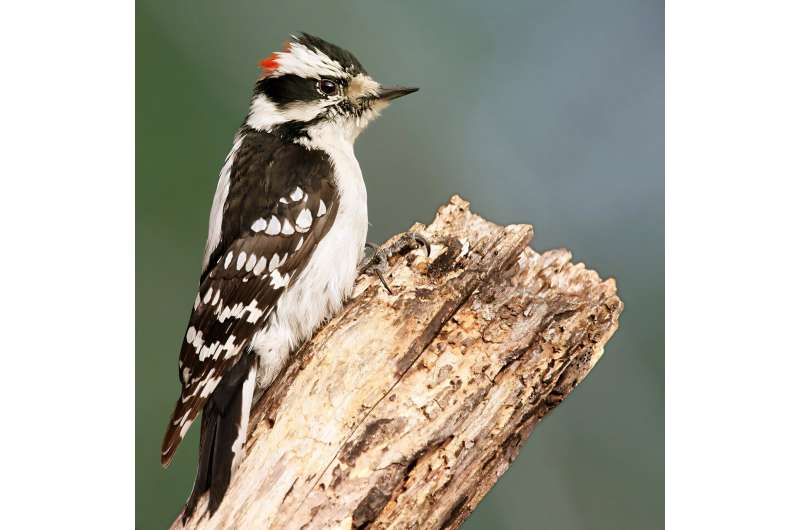Research published in the *Journal of Experimental Biology* reveals how woodpeckers optimize their drilling technique to maximize power. These birds can experience deceleration forces of up to 400g when they strike wood, and scientists have discovered that they brace their bodies similarly to athletes to enhance their drilling efficiency. This study, conducted by a team from Brown University and the University of Münster, highlights the intricate coordination of muscle use and breathing that enables woodpeckers to perform this remarkable feat.
To investigate the mechanics behind woodpeckers’ drilling, researchers gently captured eight wild downy woodpeckers and filmed them using high-speed cameras over three days. They recorded the birds’ movements as they drilled and tapped on a hardwood surface while also measuring muscle contractions in their head, neck, abdomen, tail, and legs. This comprehensive approach allowed the team to gain insights into the birds’ physical adaptations during their powerful strikes.
The study’s lead researcher, Nicholas Antonson, explained the significance of muscle coordination. The woodpeckers’ hip flexor and front neck muscles play critical roles in driving their beaks into the wood. When the birds brace their bodies, they effectively transform themselves into a hammer, using their entire structure to exert force. They stabilize their bodies by flexing their abdominal muscles and tail muscles, which anchor them against the tree at the moment of impact.
Interestingly, the researchers found that woodpeckers can adjust the intensity of their strikes based on the task at hand. When drilling into harder wood, the hip flexor muscle contracted more forcefully, while softer taps involved less muscular effort. This adaptability demonstrates the birds’ ability to fine-tune their drilling technique for different situations, whether they are searching for food or communicating with other woodpeckers.
Breathing patterns also play a vital role in enhancing the power of each impact. The researchers observed that woodpeckers exhaled forcefully as their beaks struck the wood, a technique similar to athletic grunting that stabilizes core muscles during exertion. This synchronized breathing allows them to generate greater trunk muscle co-contraction, effectively increasing the impact force with each peck. The birds can strike up to 13 times per second, inhaling a brief mini-breath between strikes, showcasing their remarkable efficiency.
While the sounds of their drilling may drown out any vocalizations, woodpeckers utilize their entire bodies in this hammering process, from the tips of their beaks to their tails. The detailed findings from this research not only advance our understanding of avian biomechanics but also underscore the incredible adaptations these birds have developed for their unique lifestyle.
The research team included Matthew Fuxjager, Stephen Ogunbiyi, Margot Champigneulle, Thomas Roberts from Brown University, and Franz Goller from the University of Münster. Their collaborative effort sheds light on the neuromuscular coordination essential for woodpeckers’ drilling prowess, as detailed in the publication dated November 6, 2025.
For further details on this study, refer to the article titled “Neuromuscular coordination of movement and breathing forges a hammer-like mechanism for woodpecker drilling” in the *Journal of Experimental Biology*.
